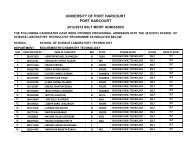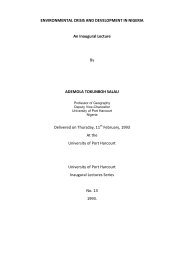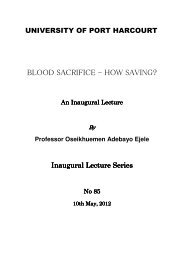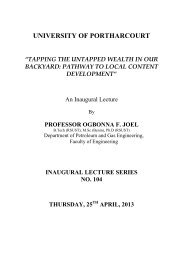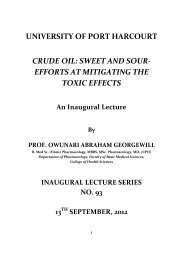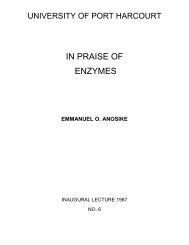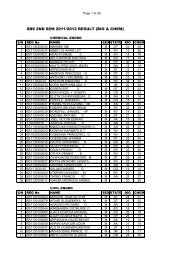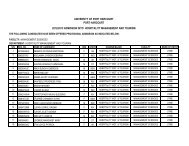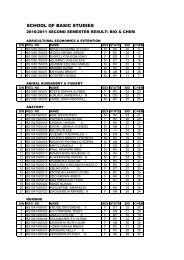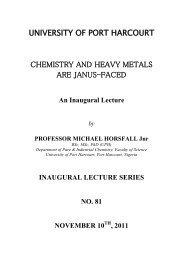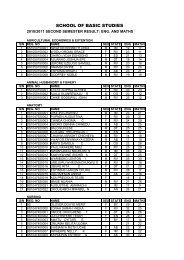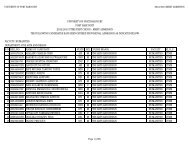55th Inaugural Lecture - 2007 by Prof. O. Akaranta - University of ...
55th Inaugural Lecture - 2007 by Prof. O. Akaranta - University of ...
55th Inaugural Lecture - 2007 by Prof. O. Akaranta - University of ...
You also want an ePaper? Increase the reach of your titles
YUMPU automatically turns print PDFs into web optimized ePapers that Google loves.
extracts and their derivatives have been found to possess goodtanning properties (<strong>Akaranta</strong>, 1999).Lignocellulosic ResiduesThey are those agricultural residues that contain cellulose,hemicellulose and lignin as their major components. Theseinclude such residues as sugarcane bagasse, orange mesocarp,corn cob, peanut husk, palm fruit fibres, melon seed shell etc.Particle BoardsThe most commonly available type <strong>of</strong> industrial woodproducts such as particle boards are made from wood chipsobtained from forest thinnings, timber and saw mill wastes.However, the declining potentials <strong>of</strong> our forest due todeforestation makes it difficult to meet up the rapidlyincreasing demand for particle boards in future. The situationhas been further aggravated <strong>by</strong> the rapid increase in thepopulation <strong>of</strong> developing countries. Therefore, in order to meetthe raw material requirements for particle board production,agricultural residues appear to be the most attractive andpromising source. (<strong>Akaranta</strong>, 2000). In this regard, corn cob,sugarcane bagasse and peanut husk have been used as sources13




